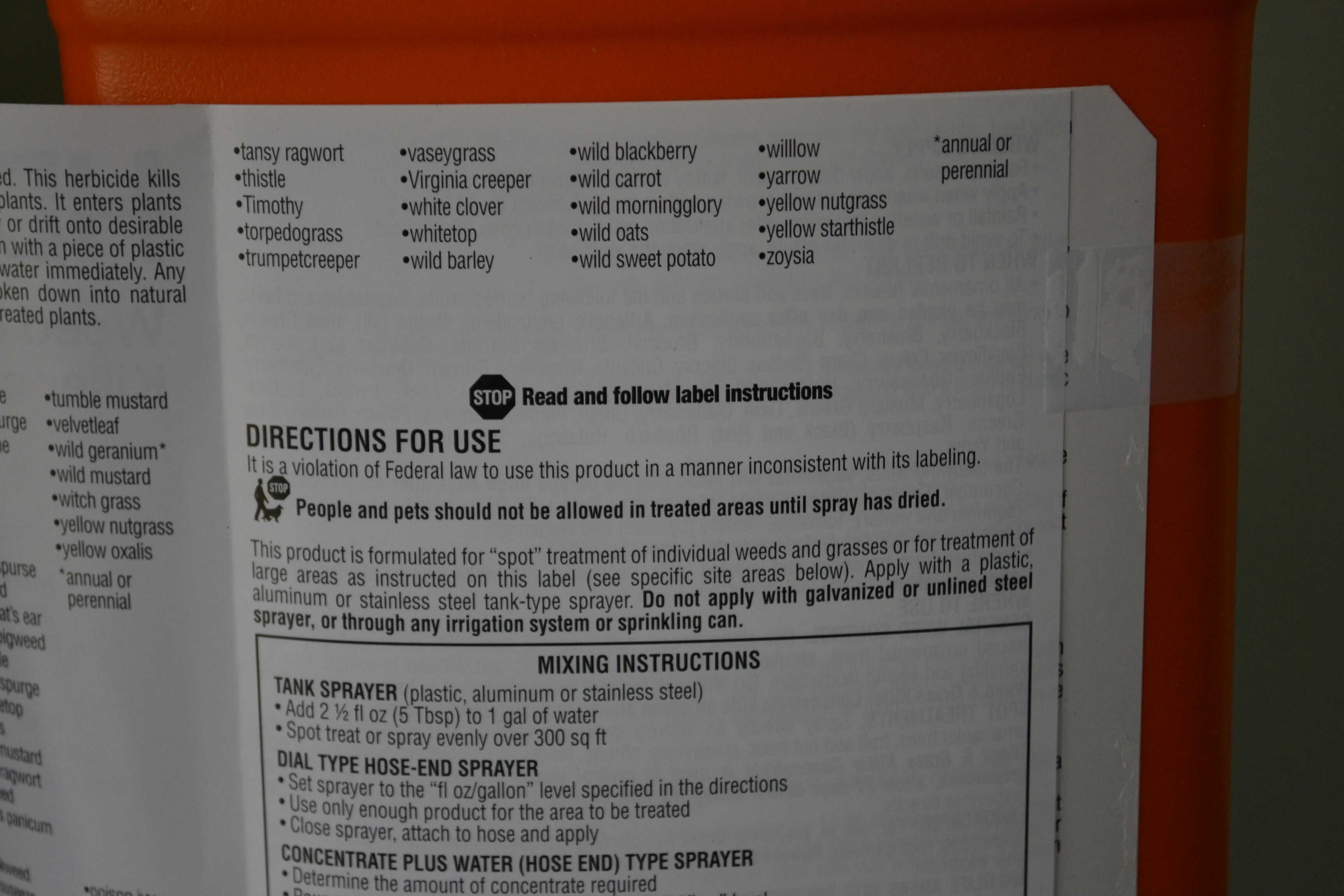
by Beth Bolles | Jul 21, 2014
You hear it all the time. Be sure to read the label before using any pesticide. Honestly though, is this a practice you really follow? It should be.
Sometimes we do not consider pesticides dangerous since we can buy them in most any retail store or garden center. Companies surely would not sell something to an average homeowner that is too toxic or dangerous.
Pesticides are chemicals that are used to kill insects, plants, and sometimes mammals. Even though many of the most dangerous chemicals are not available to homeowners, the products you find on stores shelves should still be used with care and attention. It is important to read the label. If not only to protect yourself, but to protect pets, children, wildlife, and water systems.
Each pesticide that you buy will come with a label. This label contains important information about the product. The following is a guide to the information found on a pesticide label and why it is required by law that you read it.
Active Ingredient: This is the chemical name of the pesticide and the part of the product that is active against the pest. Before buying your pesticide, look at the active ingredient to make sure that you are purchasing the right product for your specific job. You can not always judge a product by the trade name or brand name since several very different pesticides may have the same or very similar brand names.
Signal Words: The pesticide will either have Caution, Warning, or Danger in bold letters on the label. These words tell us the product’s level of toxicity. Caution – slightly toxic, Warning – moderately toxic; Danger – highly toxic. Most homeowner products will carry the Warning or Caution signal words.
Environmental Hazards: Many pesticides are toxic to birds, invertebrates, and mammals. Some products may not be used near water in order to protect wildlife. This section will guide you in ways to prevent damage to animals, groundwater, and soil.
Direction for Use. Each label will state how to apply the product so that it is most effective against the targeted pest. This will include rates, timing of applications, and pests controlled by the product. It is never beneficial to apply more than the label states.
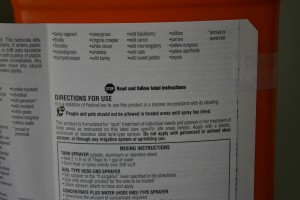
Pesticide labels are the law and must be followed.
Every label will contain additional information on precautions that need to be followed to safely use the pesticide and treatment if there is an accident. Since we are not able to predict when an accident will happen, make sure that you are always prepared by reading any pesticide label you will be using.
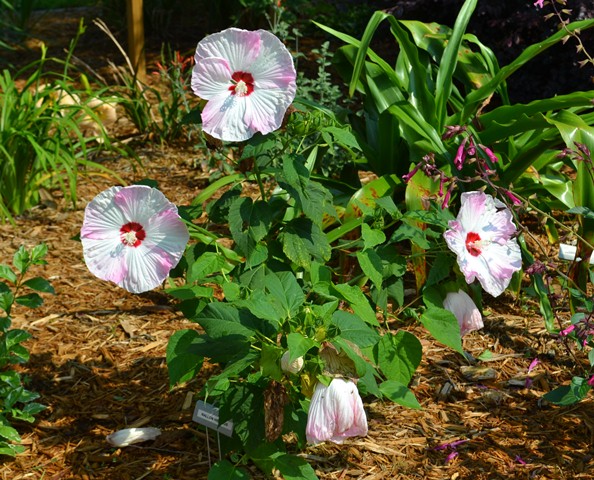
by Beth Bolles | Jun 23, 2014
In our area of Florida, soils will vary in the amount of nutrients they hold. In general, we think of our soils as nutrient poor because sand is often the highest component. Sandy soils have large pore spaces and the particles themselves do not ‘attract’ many of our nutrients. Therefore needed plant nutrients can leave a sandy soil quickly, especially when rainfall or irrigation is prevalent.
There are areas along the Panhandle that do have more quality soils that have the ability to retain some nutrients. Also, frequent fertilizer or lime applications in home landscapes can create soils with abundance of certain nutrients over time .
One nutrient that may become prevalent in routinely fertilized soils is phosphorus. We know that phosphorus is one of the big three nutrients needed by plants in order to grow and flourish. When we routinely apply phosphorus to garden beds or lawns, it can build up. Phosphorus is a nutrient that does not leave the soil as readily as other nutrients. It binds to other elements to hang around. If we keep adding phosphorus to the soil, even though there is plenty there, problems can occur. One negative impact is the potential for soils with phosphorus to wash away and pollute local water systems.
Phosphorus is absolutely necessary for plant growth. It is needed for the energy transfer which is involved in plant growth functions. Phosphorus is also important for flower and fruit formation, and root growth.
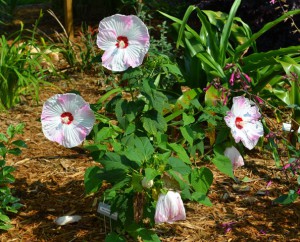
Flowering plants benefit from fertilizer but make sure your soil needs the nutrients before an application. Photo: Beth Bolles, UF IFAS Escambia Extension
There can be too much of a good thing. The key to remember, as with any nutrient, is make sure it is needed before applying it to your soil. Plant growth will not be improved beyond what is normal by adding more of any nutrient. Before you grab the bloom promoter or starter fertilizer with high phosphorus, run a soil test to accurately determine what is really needed in your soil.
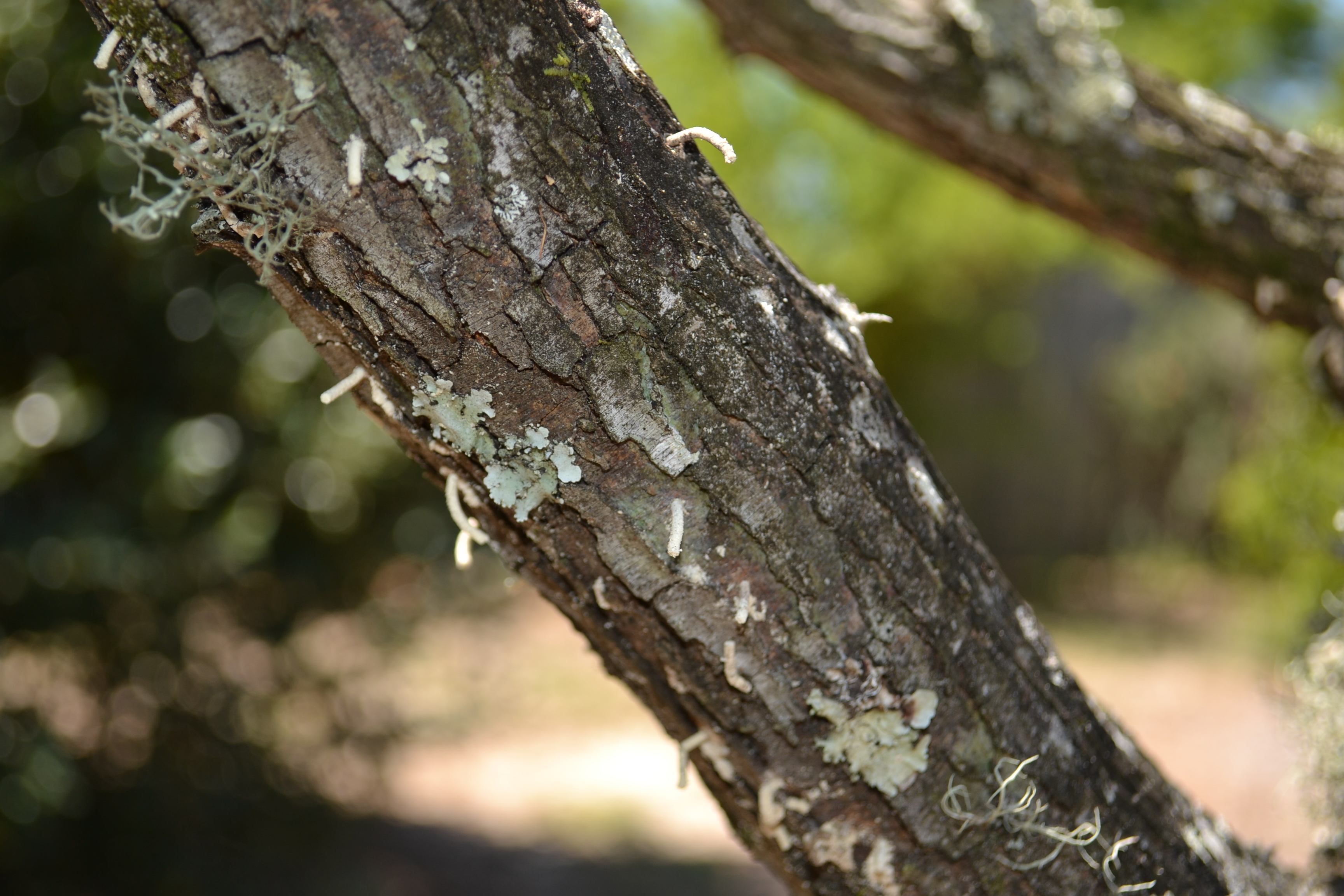
by Beth Bolles | May 27, 2014
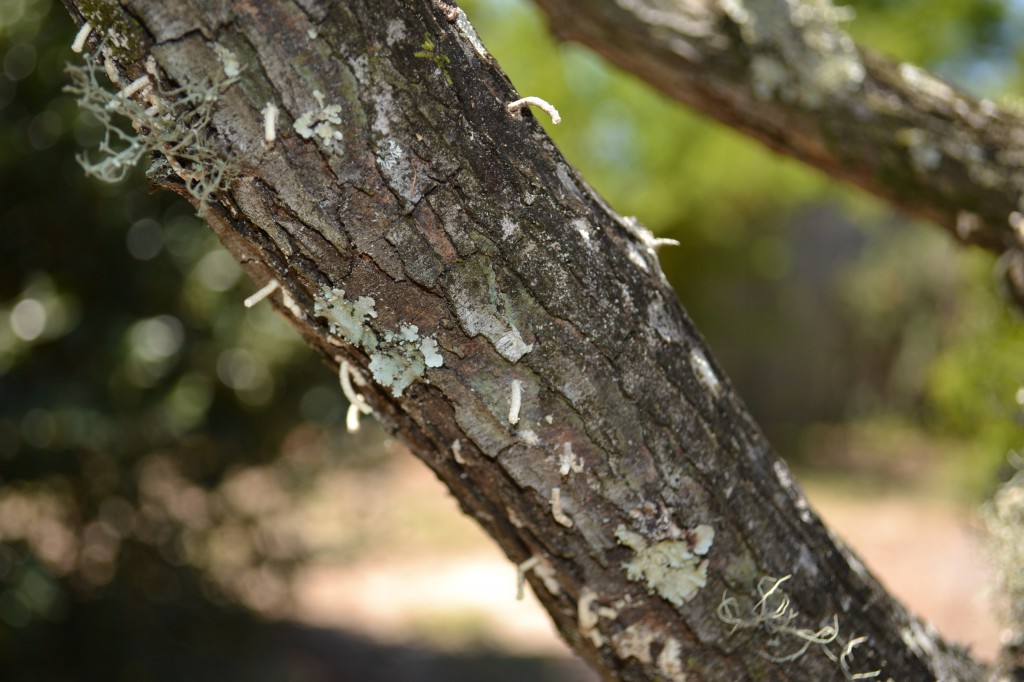
Frass (toothpick-like projections) extends from entry holes on a Jeruselum thorn damaged by cold temperatures. Photo by Beth Bolles, UF IFAS Escambia Extension
Winter injury and stress to many trees has attracted granulate ambrosia beetles to landscapes. These beetles mostly prefer weakened trees and cut stumps/logs but have been found to attack some healthy trees as well.
Adult beetles are very small, only about 1/16 inch long and bore into branches and trunks of many woody plants. They will push out small ‘strings’ of boring dust which look like toothpicks. These strings successfully protect the beetles as they establish galleries for laying eggs and rearing young within the tree. The adult females will introduce a fungus (ambrosia) into these galleries on which both the young beetles and adults feed.
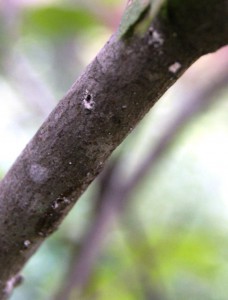
Ambrosia Beetle Entry Point. Photo by Matthew Orwat
Many beetles will bore into a plant, mostly along the trunks. Plants may be ultimately killed, not by the beetles but by the fungi that interfere with the movement of fluids within the tree.
If you notice a tree infested with ambrosia beetles, it is best to remove the plant quickly. Remove all infested plant parts from your landscape. If you have a special plant that you want to save, you may be able to cut it back close to the ground, and allow it to resprout. It would be necessary to monitor the remaining portion carefully for reinfestation and treat with an approved insecticide to prevent beetle entry.
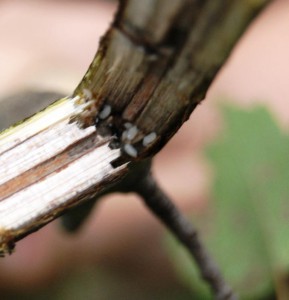
Interior of damaged stem.
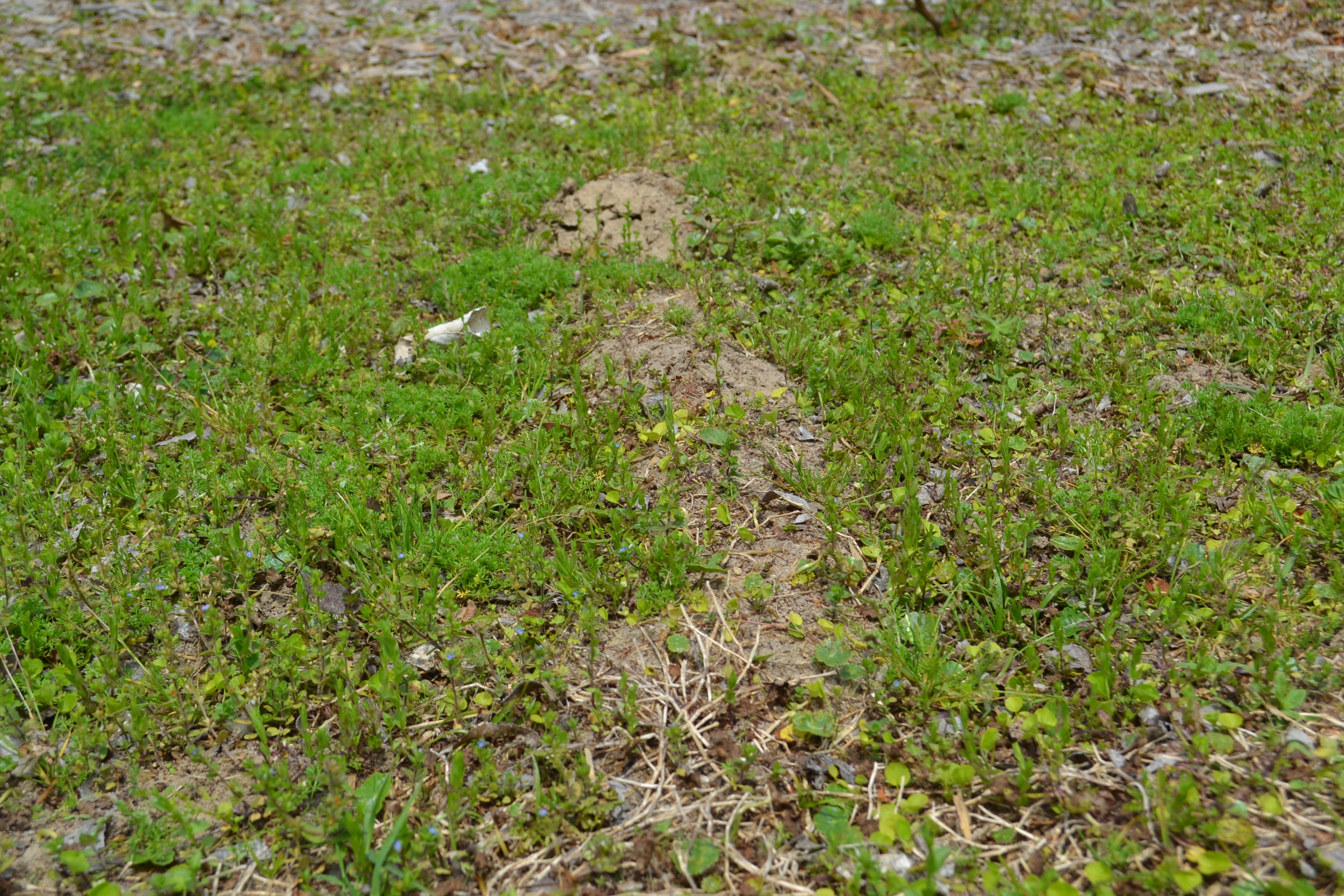
by Beth Bolles | Apr 15, 2014
How can an animal that does such much to help rid your lawn of pests be so hated by most homeowners? Such is the life of the mole.
The beneficial mammal is a soil dweller that tunnels through the soil, increasing aeration as it searches out a meal of beetle grubs, mole crickets, and slugs. Moles prefer loose soil and can tunnel more than 15 feet an hour. Moist soil brings the food source closer to the surface which in turn bring moles up to expose raised tunnels to homeowners. These tunnels are mostly cosmetic and show up easily in mulched areas and lawns with heavier weed populations. Most homeowners with a healthy, thicker lawn will rarely notice mole activity unless they encounter loose areas as they walk over the turf. These can easily be pressed back down with your foot.
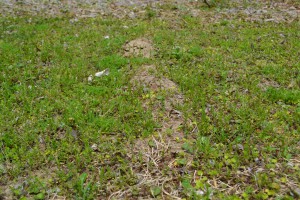
Mole tunnel in weedy area. Photo: Beth Bolles, UF IFAS Extension Escambia County
There are management techniques for moles which include traps and ridding the lawn of the food source. The best practices are to manage the turf through proper mowing, watering, and fertilizing to create a uniform, healthy cover. For the most part, mole management is not even required. Consider the benefits of the moles as predators and allow them to be a natural part of the landscape environment. For more information on moles read the University of Florida IFAS Extension publication.
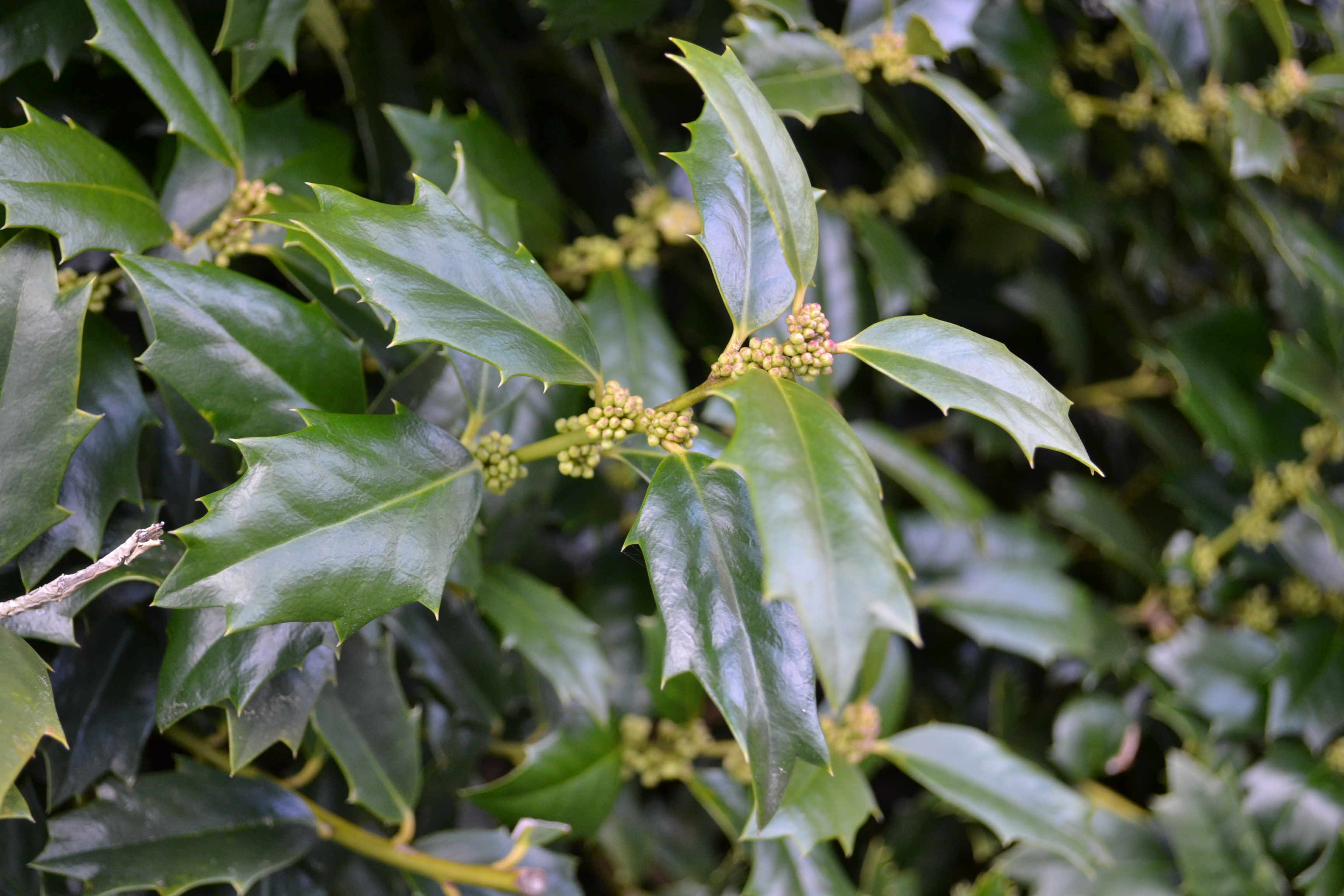
by Beth Bolles | Mar 12, 2014
Landscapes will soon be transitioning from the dormant phase to actively growing and one of the most beneficial insects of all will be back in action. As soon as flowers open, bees will be visiting to gather pollen and nectar.
This year be a little more observant in the landscape and at your local nursery so that you protect bees during your yard activities. Several insecticides will have new labels that indicate a toxicity to bees and restrictions about applications to blooming plants. Since many landscapes have a wide variety of blooming plants, be very careful not to inadvertently spray when bees are visiting open flowers. Bees are not only killed by a direct spray of certain insecticides, but may carry residual pesticides back to the colony in pollen and nectar.
Since bees and other pollinators are so vital to our food production system, all people who work in landscapes or enjoy gardening as a hobby, need to be a part of bee protection. Read labels, only spray when absolutely necessary, and learn that a little cosmetic damage is worth it in order to protect pollinators.
Some selections of hollies are one of the first landscape shrubs visited by bees in the winter. Learn about the other plants in your yard that are visited by bees so you are better able to protect them.

Holly flowers will soon open.
Photo: Beth Bolles, UF IFAS Escambia County Extension












